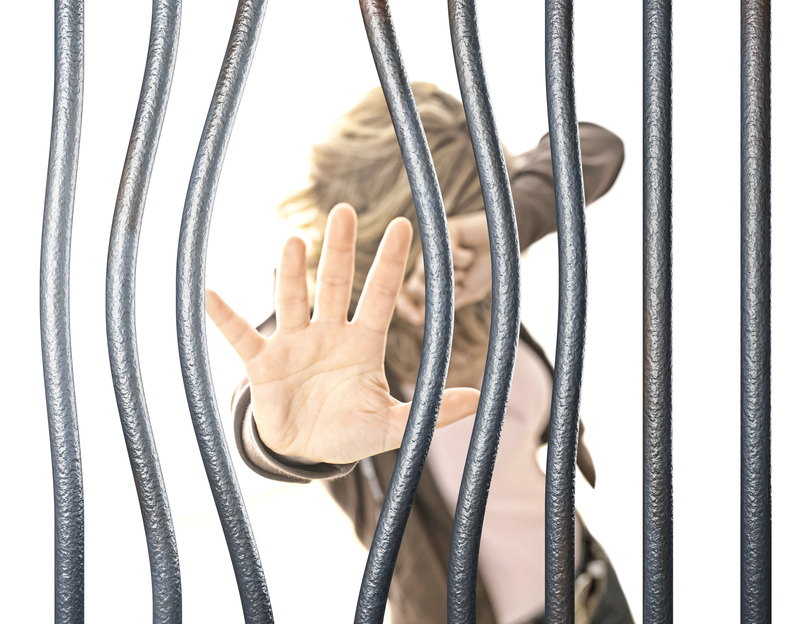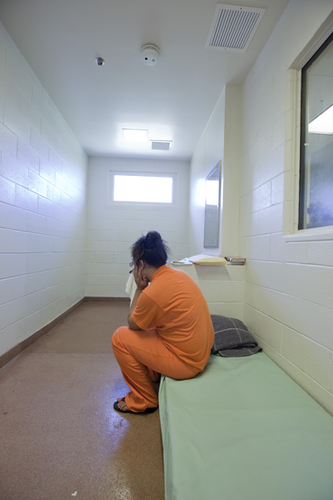
For prisoners living with mental illness, the situation today, in the face of severe budget cuts following decades of imposed austerity in the name of efficiency and the pursuit of profit, is a hellhole.
In Jamaica, prisoners living with mental illness are trapped in a human rights nightmare. Prisoners living with mental illness require more supervision and more assistance, and that means an investment of resources. Instead, those prisoners living with mental illness are left to fend for themselves and for one another. That means those prisoners living with mental illnesses stay for long periods in soiled clothes and environments, suffer rapid deterioration and decline, and spend longer periods in prison than healthy prisoners. Not surprisingly, the situation is particularly lethal for elder prisoners.
In Canada, 35 per cent of the 13,300 prisoners in federal penitentiaries have a mental impairment requiring treatment. That’s triple the 2004 estimations and way higher than the general population. It’s a flood. And what happens when someone with mental illness goes into prison: “The mind-bending isolation of a segregation cell brings no peace to a depressed or unhinged mind. Nor does an environment of slamming cell doors, fear and intimidation.”
And what is isolation … really? If it’s long-term, it’s torture. According to Dr. Atul Gawande, “The people who become psychotic in solitary confinement are people who often have attention deficit disorder or low IQ or issues of prior mental illness. … There’s a very high rate of psychosis and people flat-out going crazy under the confinement conditions. And so, then what I puzzle over is, does it actually reduce our violence in our prisons? The evidence from multiple studies now is that not only that it has not reduced violence, it’s increased the costs of being in prison.”
Long-term solitary confinement is torture because it targets those living with mental illnesses. The same could be said for prisons and jails.
In the United States, somewhere between 16 and 20 percent of prisoners are living with mental illnesses. In California, there are nearly four times as many people with serious mental illnesses in jails and prisons than there are in hospital. Ohio reports that the mental health system “has shifted the problems to prisons and homeless shelters.” Arizona and Nevada have the highest ratio of prisoners living with mental illness. Some call this a tragedy. Some say prisons and jails have become the new asylums. Prisons and jails have become the New Bedlam, and we are all the wardens.
A thirteen-year-old girl in Ottawa kicked in the back window of a police cruiser. The State determined that she was mentally ill and had her institutionalized. Where? Ottawa “shifts the problem” to Utah: “the … province’s Ministry of Health and Long Term Care … has funding arrangements with U.S. facilities to provide residential treatment to Ontario residents”. After nine days, the girl was deemed too violent, and `shifted’ to a children’s hospital. Now the parents face the possibility of having to pay astronomical hospital fees while their daughter faces the near certainty of incurring further criminal charges. Only prison awaits her. This is the practice of `shifting the problems.’
The withering of the welfare state has produced national programs, public policies, and popular ethics of `shifting the problem.’ In the United States, in the past fifty years, the number of psychiatric beds has been reduced by 90 percent. In the 1950s, there was one psychiatric bed for every 300 persons. Now, it’s one bed for every 3000. Where have those beds gone, where have those resources gone, and most importantly where have those people living with mental illness gone? Prisons. Jails. The New Bedlam. They went into the hellhole, they are in the hellhole, and we are the wardens.
(Image Credit: http://www.mentalhealthy.co.uk)
